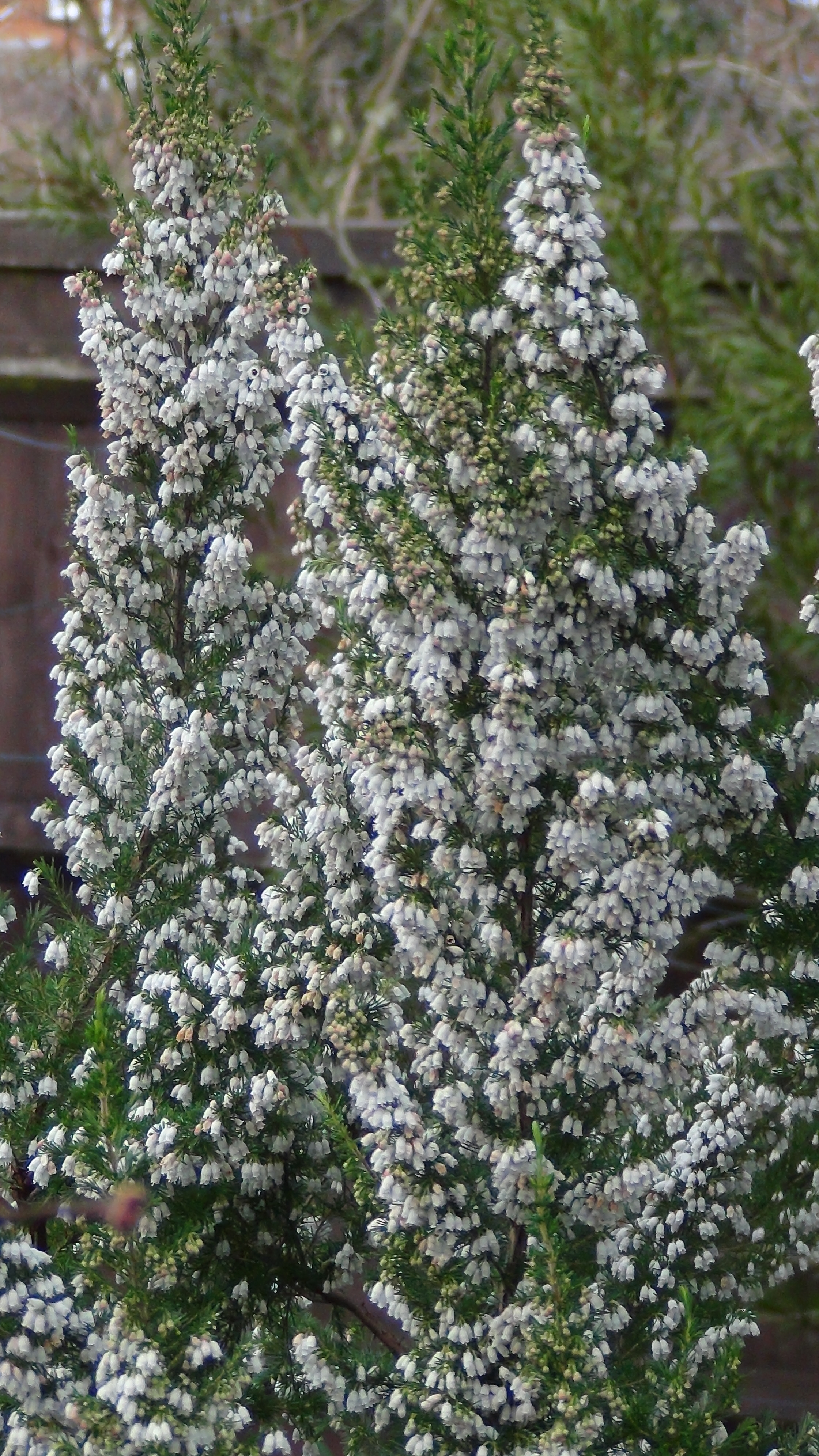If anyone would like a complete hard copy set of Heather Society Yearbooks and Newsletters, please contact me via the Heathers contact from the website. For the cost of postage you can have a unique set of documents produced by the society over the years.
Uncategorized
‘Louisa Bolus’ (=Erica verticillata)
Bushy, medium-sized shrub, to average height of 1.4–1.6m, old specimens to 2.0m; 0.7–1.0m broad. Flowers pink (paler than ‘Adonis’), tubular, 20mm long, 4mm diameter; arranged in terminal 4- or 5-flowered (rarely 3- or 6-flowered) umbels, on very short lateral branches arranged in whorls. Viable seed produced. Synflorescences spike-like, not neat, each with up to 6 whorls of flowering branches on strong, erect, main branches; terminal apex of the stem continuing growth. Non-flowering lateral branches on the main flowering stems to 3cm long, arranged in whorls of 6. Foliage green, leaves to 5mm long, appearing crowded. Very like ‘Adonis’ which has darker flowers. Smaller and bushier than ‘African Phoenix’, with less orderly synflorescences; overall thicker, heavier and bushier in appearance.
Origins: accession number 272/12; propagated from what was apparently one large, old specimen, growing in a forest clearing behind the braille trail at Kirstenbosch. Progeny had pale and dark flowers: the darker clone is ‘Adonis’. These are believed to be remnant seedlings from an early collection, possibly the one made for Kirstenboch by Mrs Bolus in 1917. It was rediscovered by Senior Foreman Adonis Adonis in 1990.
Being of South African origin the plant is not regarded as hardy in the UK and is preferably grown in a pot, using ericaceous compost, and brought into a frost free, light and airy environment during the winter months.
® E.2012:12 registered by Anthony Hitchcock, Nursery, Plant Collections & Threatened Species Program Manager Kirstenbosch National Botanic Garden.
Webmaster
Header Advert Section – Right
Header Advert Section – Left
Heather Society
A friendly group, full of knowledge on growing heathers and their uses in your garden. You can also find us on Facebook
Erica cinerea
'Molly Rose'
Deep rose-pink flowers (H7) verging onto cerise (H6), single, VII-IX; corolla urn shaped 6mm long x 4mm across; calyx, anthers, and style-end ruby (H5); calyx length 3 mm; foliage dark green; new growth bright green; habit compact. Wild-collected, found in August 2013 in the vicinity of Frencham, Surrey, by Molly Rose Hall. ® E.2014:03 registered on 3 November 2014 by John Hall, John Hall Plants Ltd, Headley Down, Hampshire, UK.Erica lusitanica
White flowers, XII–V, buts sometimes tinged pink; mid-green foliage; open erect habit; height to 1-4.5m; spread 61–75cm. Young shoots hirsute with simple, smooth hairs. Leaves in whorls of 4 (sometimes in 3s), linear to 7-0.5mm, light to dark green. Inflorescences usually numerous and crowded towards ends of shoots, appearing to form elongated panicles: 1-4 flowers in each terminal umbel at tip of short, leafy lateral shoots. Corolla white, often tinged pink in bud, narrow-campanulate to tubular-obconical, c. 5mm long. Stamens 8; filaments white, with microscopic hairs at base extending about a third the way up on sides and surfaces. Flowering in winter and spring (sometime from late autumn).
Often confused with Erica arborea (tree heath), this species can be distinguished clearly by two characters, both easily detectable using a good hand-lens: there are no branched hairs on the stems, but there are hairs, tiny, simple ones, on the lower portions of filaments of the stamens.
Erica lusitanica is native on the Iberian Peninsula ranging into south-western France.•
f. alba
White flowers.
a. blumii
Flowers facing upwards, not nodding. A variant first noticed by Herman Blum, Steenwijkerwold, Netherlands, and named after him.
a. cantabrica
Flowers never white, but pale pink to dark purple, usually lavender in the wild, and always nodding.

